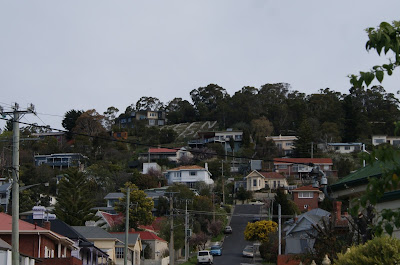South Hobart is famous for its Keen's Curry sign. The Keens Curry sign has been visible on the foothills of Mt Wellington for over 100 years.
When 22-year-old carpenter, Joseph Keen, sailed to Australia from Britain in 1841 with his bride, Johanna, he would never have dreamt that his curry-powder creation would still be tantalizing taste buds 150 years later. Following Johanna's death in Sydney in 1843, Joseph left for Van Diemen's Land where he soon married Annie (Nancy) Burrows and became a father of 16 – to nine daughters and seven sons. Joseph and Annie settled at Browns River, Kingston, south of Hobart, where they established a bakery, small manufacturing outlet and a general store. Joseph Keen created the iconic curry powder in the 1860's and sold it from his small store in Kingston as well as producing and selling his own sauces and other condiments.
Within a decade, Joseph's curry powder was known throughout the colony and his produce was winning awards. He received a medal for his spice mix at the 1866 Inter-Colonial Exhibition in Melbourne and an honorable mention for his spicy sauce at the 1879 Sydney International Exhibition. In 1905, after both Joseph and Annie had passed away, the couple's sixth daughter Louisa and her husband Horace Watson took over the family’s curry-powder business.
Horace purchased land in the foothills of Mount Wellington overlooking Hobart, and soon after, transformed it into a large advertising sign, and using heavy stones painted white, he formed the words 'Keen's Curry' in letters 15 metres high. Public uproar resulted, but Horace won the right to use the land as an advertising sign. In a university prank in 1926, the letters briefly read 'Hell's Curse', and students altered it again in 1962 to promote a theatre production. In 1994 the landmark read 'No Cable Car' as a protest against a proposed development. However the sign has been restored after every change.
It’s not quite as glamorous as the world famous Hollywood sign but its great that the sign is still there and visible all these years later. Although not strictly from the colonial era, the sign is certainly of historical significance and is listed on the Tasmanian Heritage Register.
And also it’s very cool!!!!




